Fullerton, California: Offering a peaceful retreat in the city, the Fullerton Arboretum is a botanical oasis in the greater Los Angeles area. Located on the campus of California State University and spanning over 26 acres, this living museum of flora showcases a collection of over 4000 plants, lakes, streams, historic buildings, and perhaps the only upside-down waterfall.
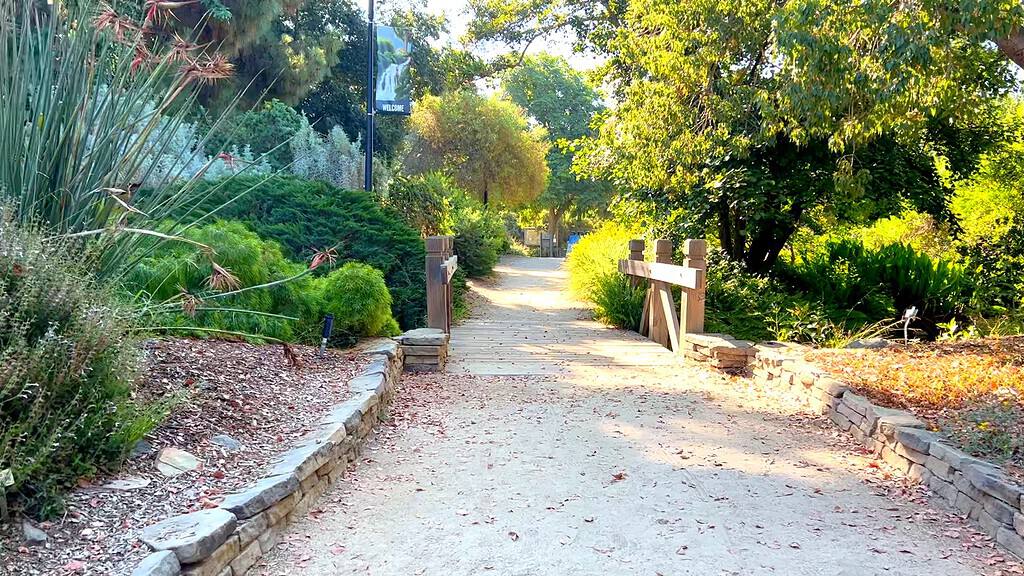
Whether you are planning a trip to the Fullerton Arboretum and Botanical Garden or are just interested in seeing it from afar, this post will take you along the path through flowers and forests. A Garden Travel Guide to the Fullerton Arboretum is located at the end of the post to assist you in planning your trip.
Fullerton Arboretum Waterfall
The visitor is guided into the garden by the sound of falling water. The waterfall was formed from a mold of a real waterfall in the Sierra Nevada mountains. However, the astute visitor may notice that the waterfall is wider at the top than at the bottom. Yep, it was installed upside down.
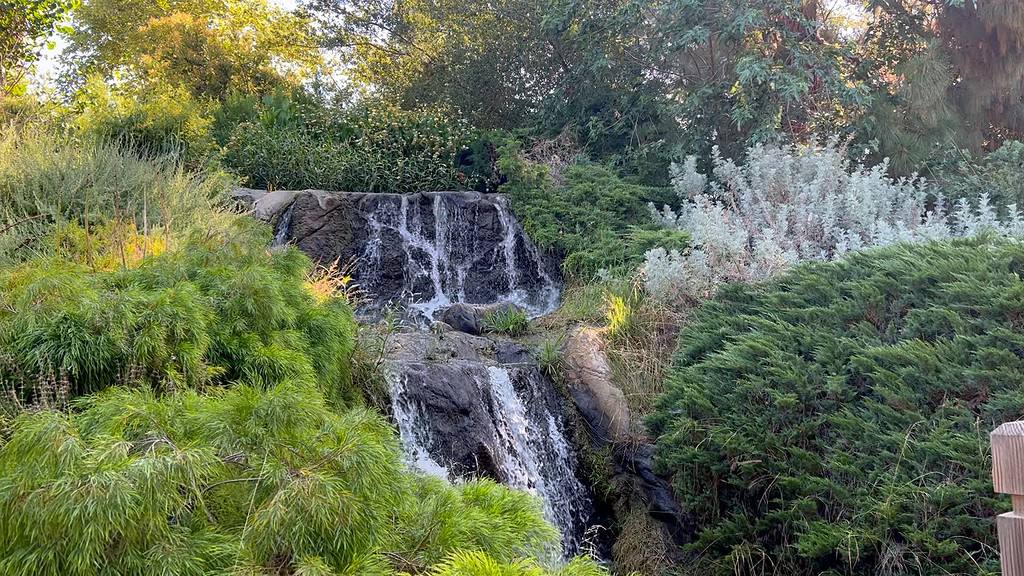
Nonetheless, it provides an element of drama at the entrance. Follow the stream off to the right for a walk into the forest.
Fullerton Arboretum “A Place For Trees”
The name “arboretum” comes from the Latin word for “a place of trees,” and this 26-acre site cares for more than 1,500 trees from all over the world.
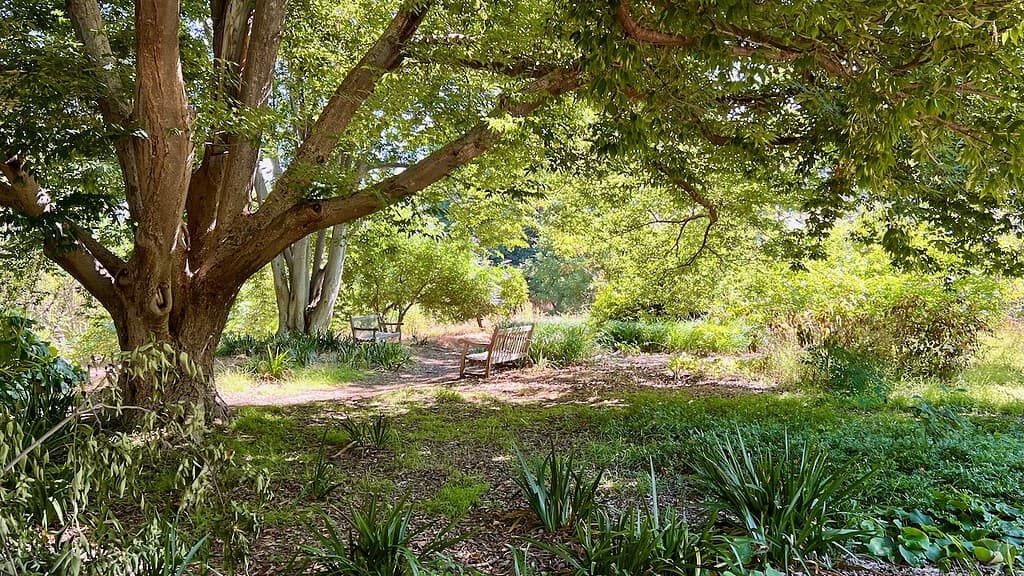
Benches strategically placed under the canopies of mature trees provide relief from the sun and offer a quiet, peaceful place in the midst of the city.
The Fullerton Arboretum is one of only three arboretas in California to have achieved the highest accreditation of level 4 from Arb Net International, an international organization that establishes a recognized set of industry standards.
The woodland collection includes areas dedicated to subtropical, deciduous woodlands, conifers, and Palms. In a one to two-hour leisurely walk, the visitor moves through the shade of Palm Trees to Pine Trees to a neck-bending Redwood Forest.
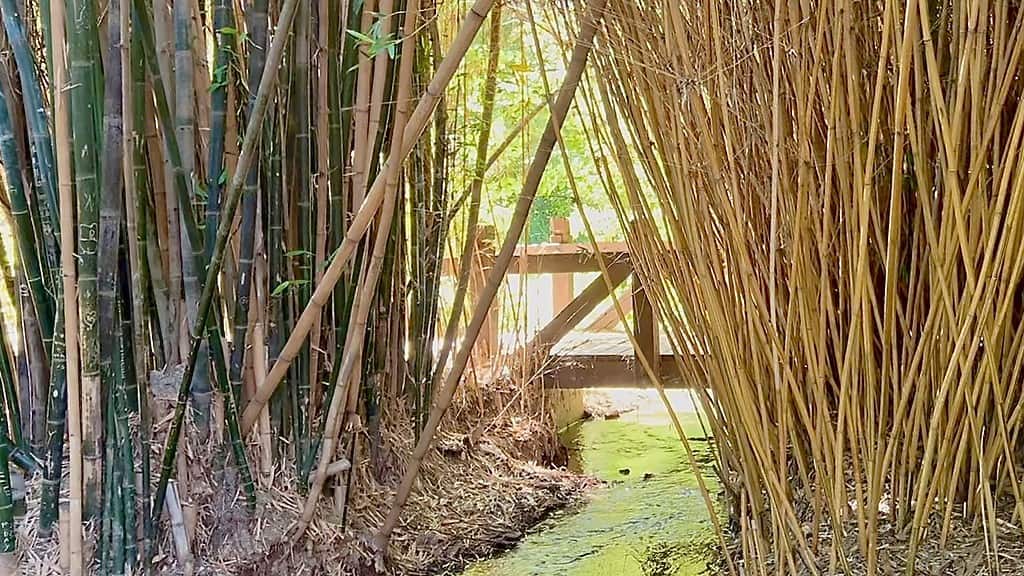

Visitors will find the Bodhi tree that was blessed by the Dalai Lama during a campus visit. A bench was placed below it so visitors could sit next to the tree. The tree is sacred in Buddhism for those who seek enlightenment.
You can find the Fullerton Arboretum’s Bodhi Tree at the southern end of the property.
Deciduous Forest
In the Deciduous Forest, the Ombu tree is a must see. Multi trunks all meet to form a broad fat base. The tree is enormous and, surprisingly, not that old. The tree came to the arboretum in a tiny pot in the back of someone’s VW Bug in the 1970s.
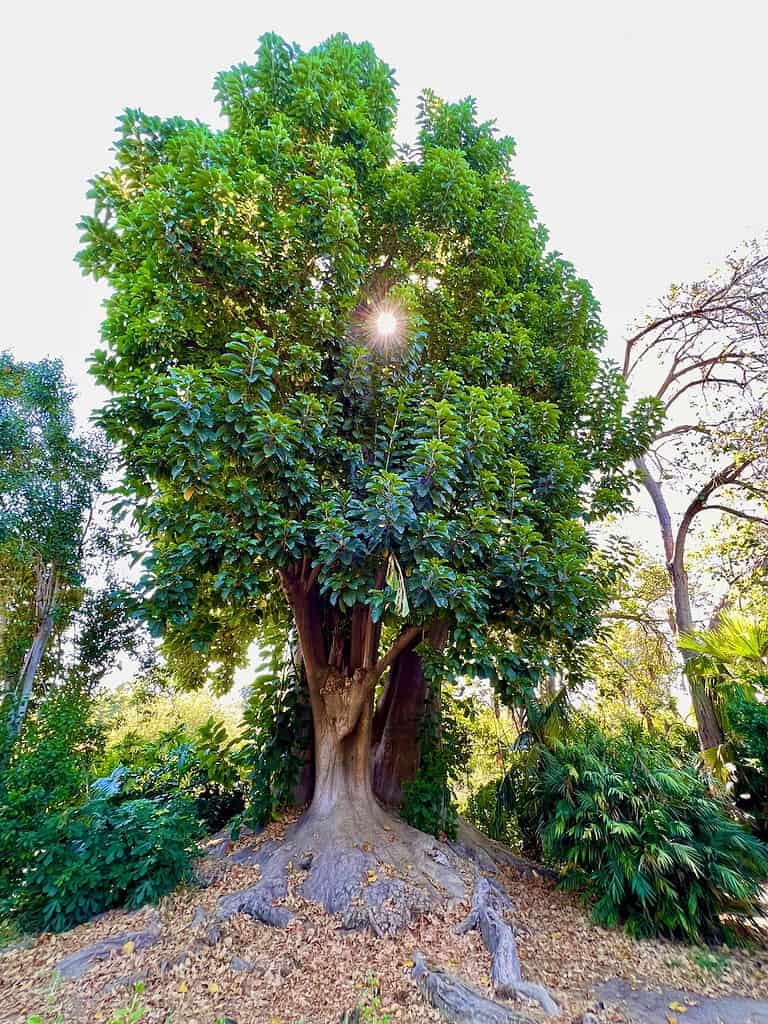
This Rock Fig Tree was my favorite. It practically glowed in the morning light. From every angle, it was beautiful.
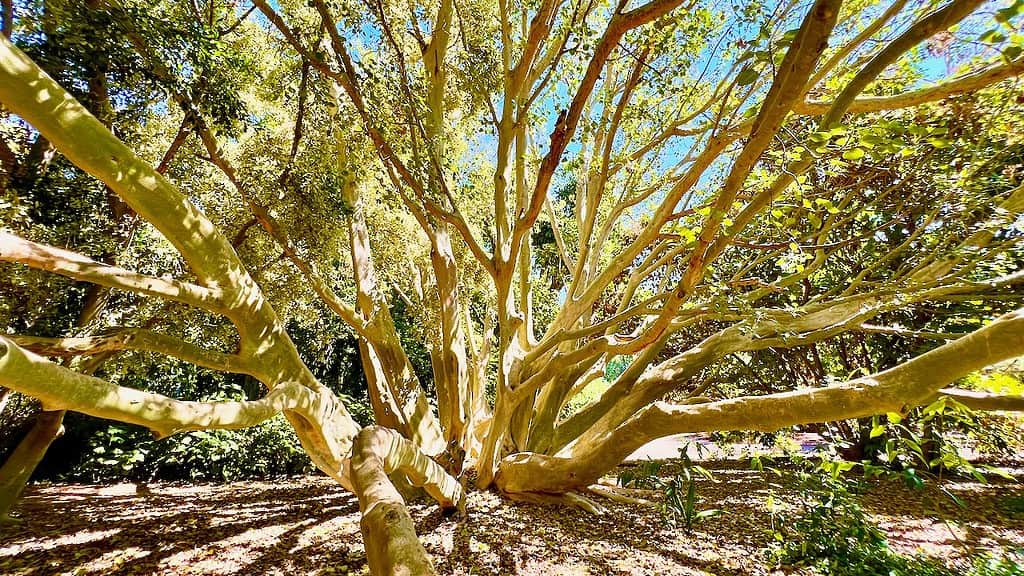
Pond Lawn
Emerging from the forest, a wide grassy lawn spreads out to the pond, teaming with fish and turtles.

Desert Garden
Along the eastern side, the desert garden impresses with architectural forms, subtle colors, and novelty. The towering cacti were awe-inspiring.
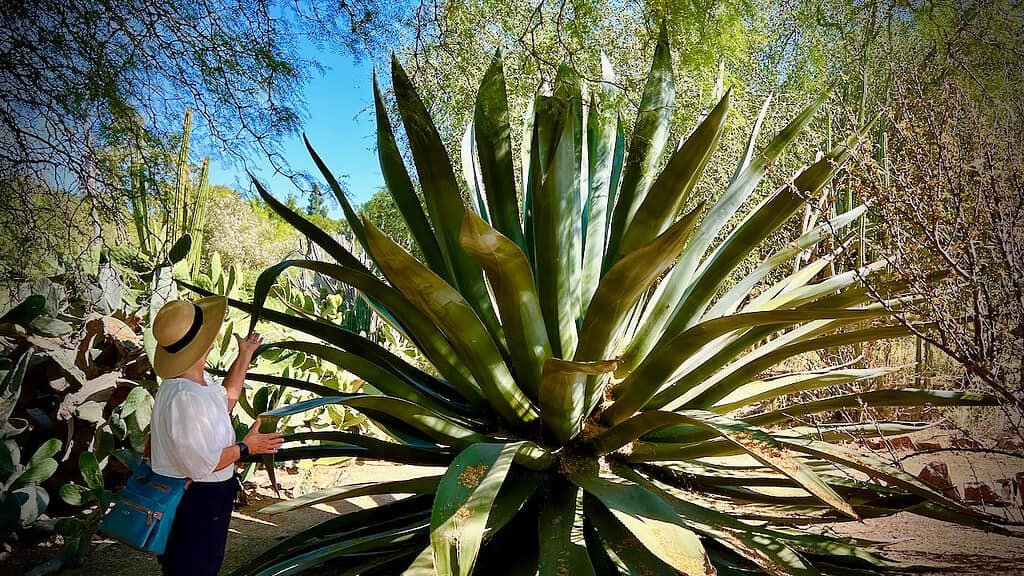
When Did the Fullerton Arboretum Open?
The Fullerton Arboretum transformed a doomed, diseased orange grove into an Urban Botanical Garden, saving it from the fate of becoming an asphalt-covered parking lot. The garden now serves as an oasis for the students, faculty, and the community.
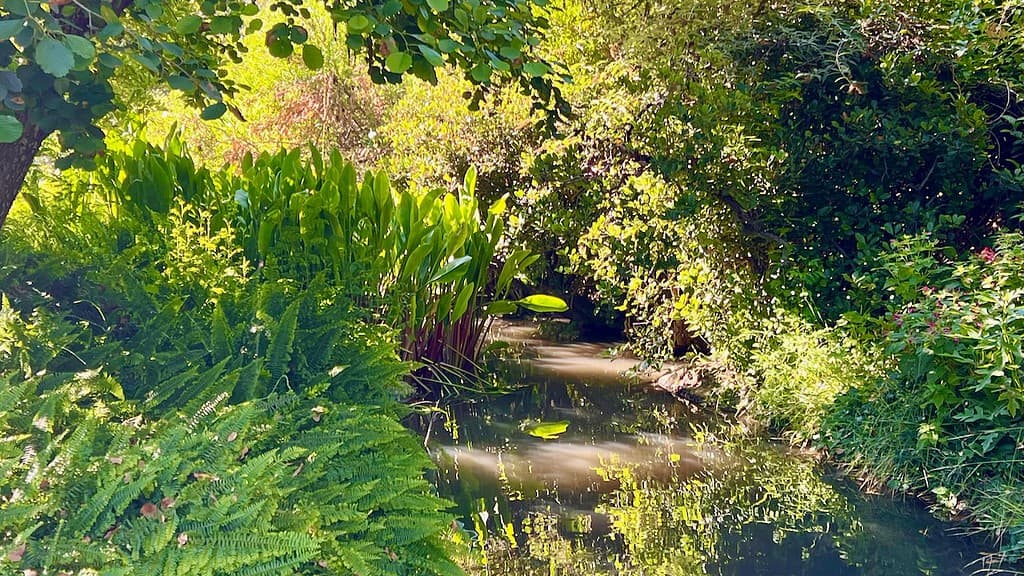
The idea of an arboretum on the Fullerton campus of California State College took root in 1970. With widespread support, the California State University Trustees approved the botanical garden in 1972, and it officially opened in 1979.
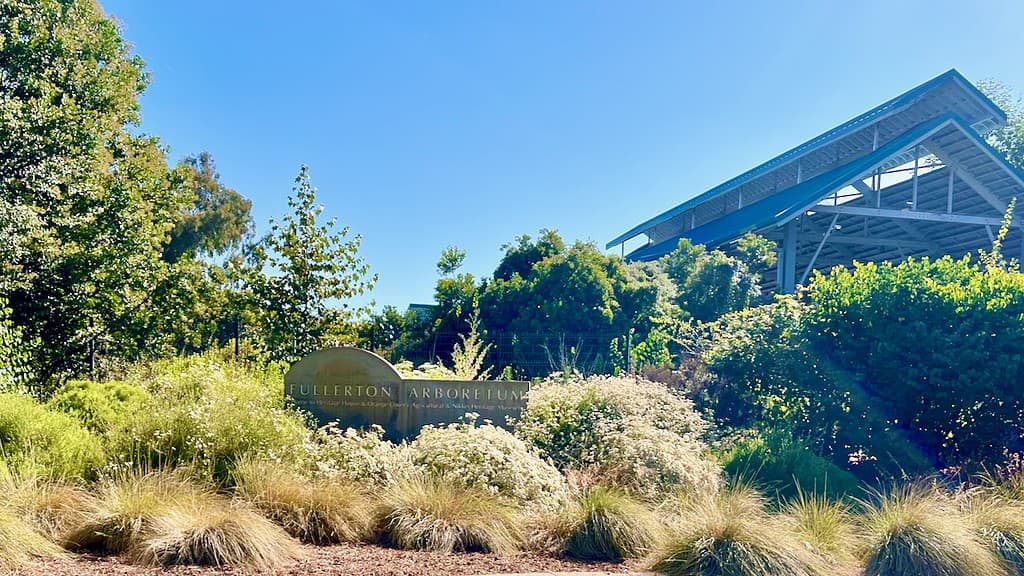
The Inner Trail
A quarter-mile trail, easily accessible for all, circles the inner gardens. The gardens in this area show delayed maintenance, but don’t let this first impression disappoint. The magic is on the outer trails.
In the inner loop, visitors will find a rare fruit grove, a rose garden, a seasonal display garden, and a children’s garden.
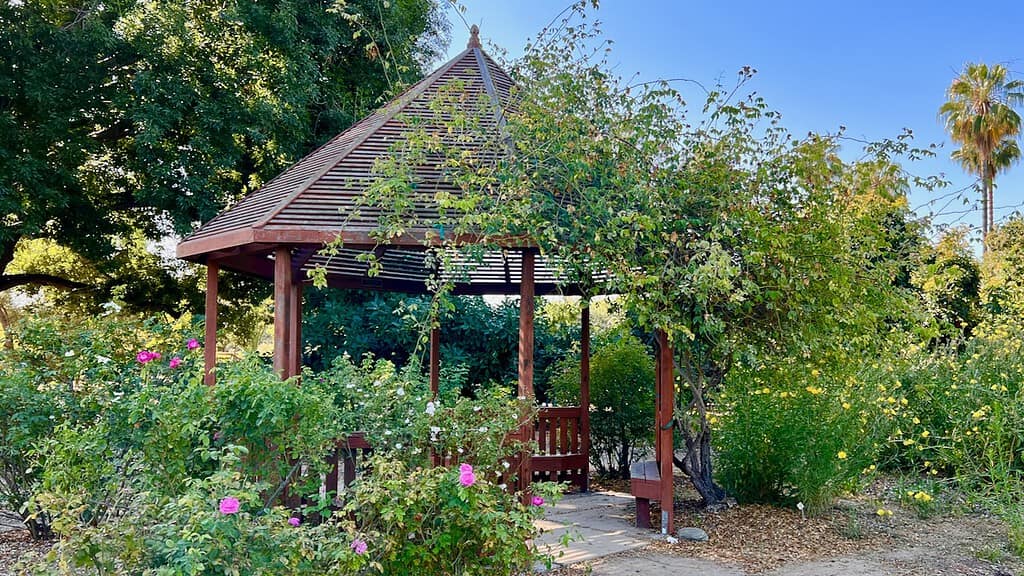
Arboretum Heritage House
The historic Heritage House is on the inner loop. It is under renovation and is expected to reopen in 2023. Its distinctive Eastlake style of Victorian architecture is a gem.
The house was built in 1894 by pioneer physician Doctor George Crook Clark as his home and office. It was moved to the Arboretum in 1972 from downtown Fullerton to save it from demolition.

The family of Charles Chapman, the first mayor of Fullerton, dedicated this stunning arbor by the house. It is a sight to behold when wisteria cascades over the lathe in the spring.
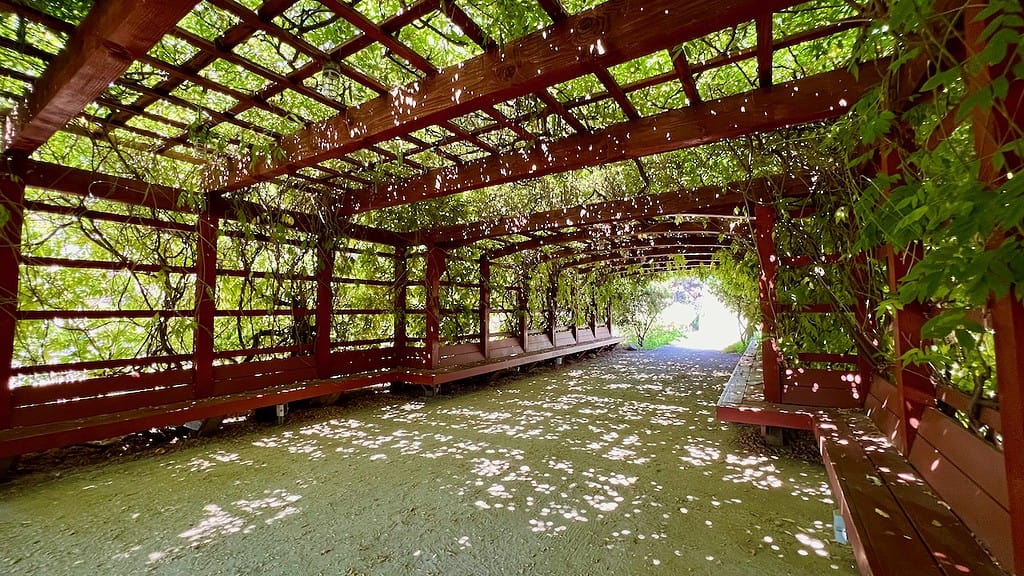
Visiting the Fullerton Arboretum

Visitors Guide to the Fullerton Arboretum
Address:
1900 Associated Rd., Fullerton, California. Located on the northeast corner of the California State University. https://fullertonarboretum.org/
How to Best Experience the Fullerton Arboretum
Plan on spending 1 -2 hours in the garden. Go early before the sun gets intense. If visiting in the summer, start out in the Desert Garden so that you can enjoy the shade of the forest as the day heats up.
I recommend closed-toed shoes for the dusty trails, a hat, sunscreen, and a water bottle. The only restrooms in the garden are located at the entrance.
The outer loop is 1.5 miles and goes through all the major plant collections, while the inner .25-mile trail takes you through the native garden, meadow, desert garden, and heritage house.
Pick up some organic produce from the garden’s bounty! Sales at the visitor’s entrance.
Fullerton Arboretum Map
To find the most up-to-date map, click here.
Fullerton Arboretum Hours
Monday – Sunday, 9 a.m. – 4 p.m.
The Arboretum follows the closure schedule of the University. Be sure to check the Cal State Fullerton Holiday Schedule, as there are about 16 days the garden is closed.
How Much Does it Cost?
Admission is free. Please consider the $5 suggested donation per person to support the garden. The arboretum relies on donations to fund its programs, maintain operations, and fulfill its mission.
Parking at Fullerton Arboretum
Parking is $4 per hour or $10 a day, payable through the ParkMobile App.
Parking can be found in front of the Arboretum and adjacent Lot G. More information about parking at CSUF can be found here CSUF Parking and Transportation Services.
Is Fullerton Arboretum Pet Friendly?
According to the Arboretum website, no animals of any type, including emotional support animals (Service Dogs excluded).
Accessibility at the Arboretum
The Arboretum is basically flat, and the trails are easy to navigate. The .25-mile trail is stroller and wheelchair friendly.
Where to Eat Near the Fullerton Arboretum
Monkey Business Cafe
While there is no restaurant in the garden, consider supporting the Monkey Business Cafe, just a 3-mile drive from campus. The cafe works in collaboration with the Fullerton Arboretum by using the garden’s organically grown vegetables in its menu. The restaurant is open for breakfast and lunch, or enjoy their signature locally roasted coffee.
301 E. Amerige Ave., Fullerton, CA 92832; Open every day from 8 am to 3 pm.
Notes: Picnicking is not allowed at the Fullerton Arboretum.
Mission of the Fullerton Arboretum
The mission of Fullerton Arboretum is to “support the academic mission of CSUF with a world-class living and historical collection and to provide learning opportunities for every stage of life, extending resources into the local community and around the globe to foster an appreciation for plant conservation, botanical research, and horticulture.”
Recent Posts
Museums for All in Botanical Gardens and Arboretums Blooming with Access
Museums for All is an initiative that allows individuals and families receiving food assistance (SNAP EBT - Supplemental Nutrition Assistance Program Electronic Benefit Transfer) to gain free or...
San Diego Botanic Garden, Encinitas, CA: The San Diego Botanic Garden in Encinitas is a 37-acre sanctuary about a 30-minute drive north of the city of San Diego. Just a mile from the Pacific...
